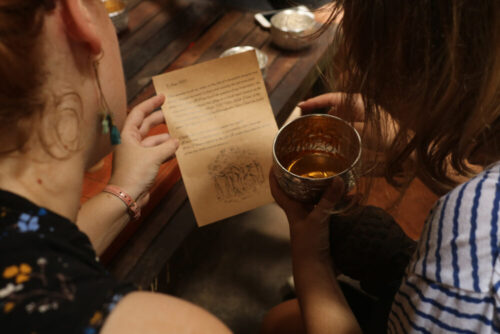In Vietnamese culture, many animals are sacred; 4 of them are more important than the others and you can see them very often in architectural depictions or in daily objects.
The 4 major mythical creatures in Vietnam are the Dragon, the Unicorn, the Tortoise and the Phoenix.
Let’s talk a bit about each of them.
⇒ The Dragon symbolizes power, originally the supreme power of the Emperors. You can see many dragons in architectural works in temples, pagodas, tombs and Royal Palaces, in Hue for example. This supernatural creature usually has its head up and his mouth wide open holding a precious stone, a jade. It has a flame-like crest and is usually seen as flying, always towards a better life. It symbolizes human aspiration for strength and freedom.
⇒The Unicorn symbolizes intelligence, peace, good luck and prestige. It represents as well the pureness of women from high ranks in the society, like princesses or empresses. In Vietnam the unicorn is different from the occidental one; it has a strange appearance and is a combination of various animals: it usually has a dragon’s head and a dog’s body but it could be as well a horse body. It can have one or 2 horns. In Vietnamese belief, the unicorn is the symbol of loyalty; that is why we traditionally find unicorn statues guarding pagodas and shrines. For TET, unicorn dances are performed along the streets, as a joyful entertainment bringing happiness, peace and prosperity.
⇒The Tortoise represents longevity, education and wisdom. Its shell is the symbol of the sky and its four legs are the four pillars of the world. Many legends in Vietnam closely connect to the tortoise. One of the most famous, dates back from the 15th century: a poor fisherman was given a magic sword by a sacred turtle which came out of Ho Hoàn Kiêm lake in central Hanoi. He handed the sword to the noble Lê Lợi who, thanks to his magical powers, raised up the Vietnamese people, won many victories and became the sovereign of the kingdom. Several years later, as he walked along the shores of the lake, the sword was caught by the turtle, which took it to the depths of the lake. A huge turtle shell was found in the lake shortly afterwards says the legend… In the temple of Literature in Hanoi, you can see the steles placed on the back of carved stone turtles, to honor talent and encourage education. Before their university exams, students used to go to rub the heads of the stone turtles for good luck, but now it is forbidden to touch in order to preserve the stone turtles. It is interesting to notice that in these 4 holy animals, the turtle is the only one which is real.
⇒The Phoenix is an elegant bird that represents nobility, grace, pride and virtue. The myth says that the phoenix burnt its nest and rose again from its ashes few days later; so it symbolizes regeneration and rebirth. As other holy animals in Vietnamese culture, it combines elements of various animals: it has the neck of the snake, the breast of a swallow, the back of a tortoise and the tail of a fish, quite a weird but elegant bird! Phoenix is often used as a decorative patterns on “áo dài” (traditional costume for women) or objects.
Apart from those 4 famous ones, there are other holy animals in the Vietnamese culture such as carps, horses, tigers and dogs; we will talk about them in another upcoming post.
If you are interested in learning more about Vietnamese culture and traditions, join our interactive adventure walking tour in Saigon’s Chinatown.
 We are glad to share with you a new focus on Urban Tales Phnom Penh in the Phnom Penh Post entitled “Exploring the capital’s secrets with Urban Tales”.
We are glad to share with you a new focus on Urban Tales Phnom Penh in the Phnom Penh Post entitled “Exploring the capital’s secrets with Urban Tales”.




